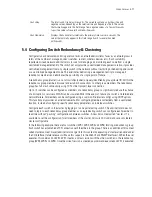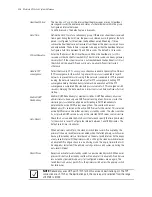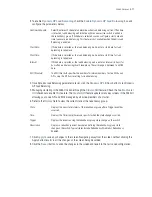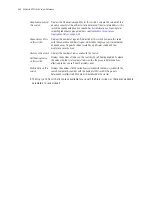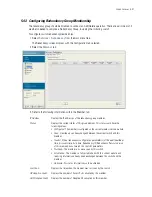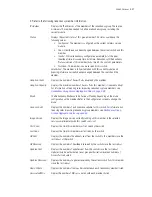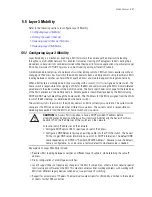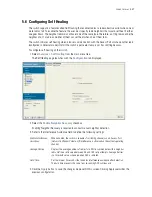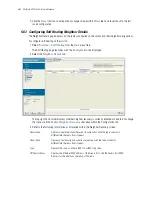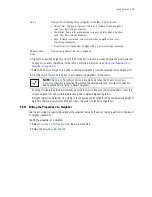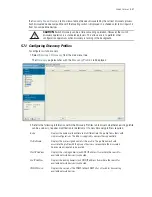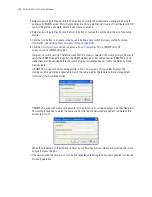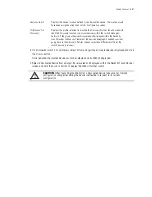
Switch Services
5-47
5.5 Layer 3 Mobility
Refer to the following sections to configure Layer 3 Mobility:
•
Configuring Layer 3 Mobility
•
Defining the Layer 3 Peer List
•
Reviewing Layer 3 Peer List Statistics
•
Reviewing Layer 3 MU Status
5.5.1 Configuring Layer 3 Mobility
Layer 3 mobility is a mechanism enabling a MU to maintain the same Layer 3 address while roaming
throughout a multi-VLAN network. This enables transparent routing of IP datagrams to MUs during their
movement, so data sessions can be maintained while they roam (in for voice applications in particular). Layer
3 mobility maintains TCP/UDP sessions in spite of roaming among different IP subnets.
A mobility domain comprises of a network of switches among which an MU can roam seamlessly without
changing its IP address. Each switch in the mobility domain needs a mobility domain string identifier so MUs
roaming between switches can retain their Layer 3 address and maintain application-layer connectivity.
When a MU enters a mobility domain (by associating with a switch), it is first assigned a home switch. The
home switch is responsible for assigning a VLAN for the MU and communicating the MU's mobility-related
parameters to the other switches in the mobility domain. The home switch does not change for the remainder
of the MU's presence in the mobility domain. All data packets transmitted/received by the MU including
DHCP and ARP are tunneled through the home switch. The IP address for the MU is assigned from the VLAN
to which the MU belongs (as determined by the home switch).
The current switch is the switch in the mobility domain an MU is currently associated to. The current switch
changes as the MU roams and establishes different associations. The current switch is responsible for
delivering data packets from the MU to its home switch and vice-versa.
Key aspects of Layer 3 Mobility include:
• Seamless MU roaming between switches on different Layer 3 subnets, while retaining the same IP
address.
• Static configuration of mobility peer switches.
• Layer 3 support does not require any changes to the MU. In comparison, other solutions require special
functionality and software on the MU. This creates numerous inter-working problems with working with
MUs from different legacy devices which do not support Layer 2 switching.
• Support for a maximum of 15 peers. The maximum roamed clients for L3 mobility is limited to the number
of clients for that RFS controller.
CAUTION:
An Access Port is required to have a DHCP provided IP address before
attempting layer 3 adoption, otherwise it will not work. Additionally, the Access Port must
be able to find the IP addresses of the switches on the network.
To locate switch IP addresses on the network:
• Configure DHCP option 189 to specify each switch IP address.
• Configure a DNS Server to resolve an existing name into the IP of the switch. The Access
Port has to get DNS server information as part of its DHCP information. The default DNS
name requested by an AP300 is “Symbol-CAPWAP-Address”. However, since the default
name is configurable, it can be set as a factory default to whatever value is needed.
!
Summary of Contents for RFS Series
Page 1: ...M Motorola RFS Series Wireless LAN Switches WiNG System Reference Guide ...
Page 10: ...TOC 8 Motorola RF Switch System Reference Guide ...
Page 56: ...2 8 Motorola RF Switch System Reference ...
Page 334: ...5 52 Motorola RF Switch System Reference 2 Select the MU Status tab ...
Page 510: ...7 32 Motorola RF Switch System Reference Guide ...
Page 534: ...8 24 Motorola RF Switch System Reference Guide ...
Page 570: ...C 14 Motorola RF Switch System Reference Guide ...
Page 589: ......

